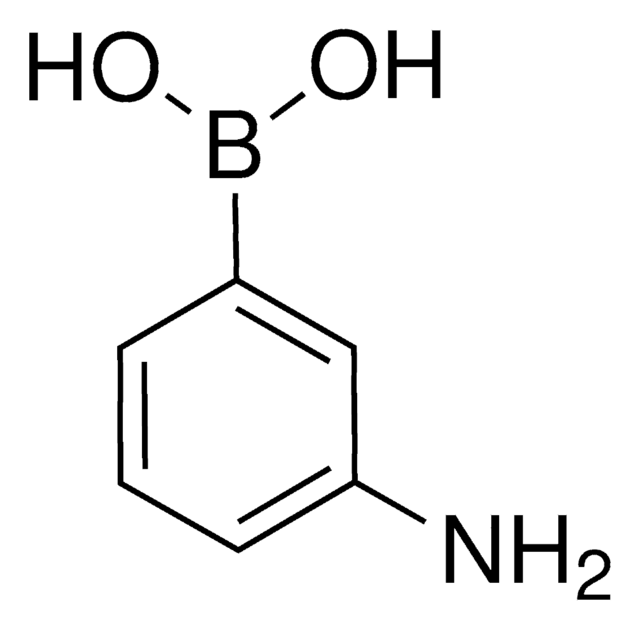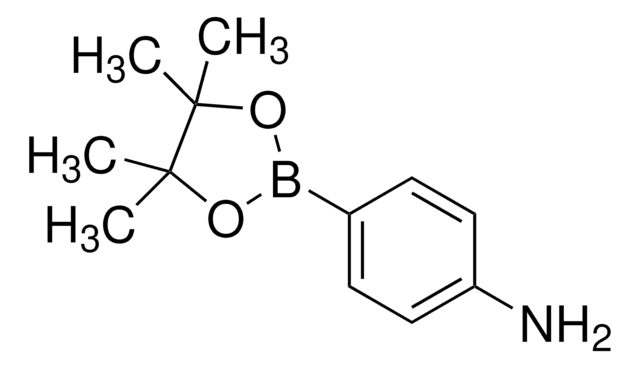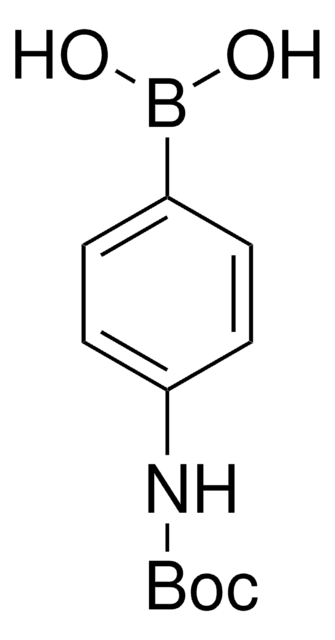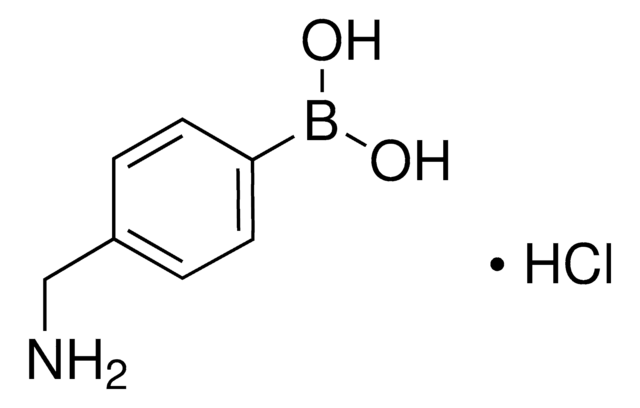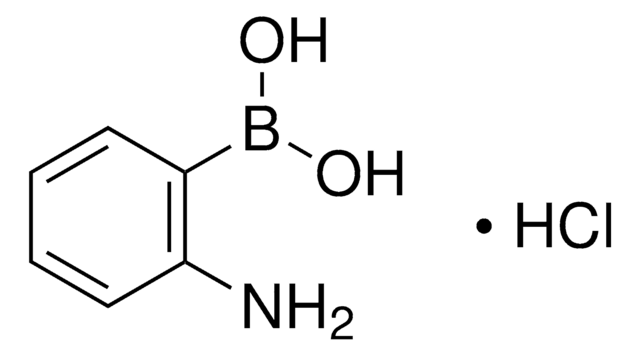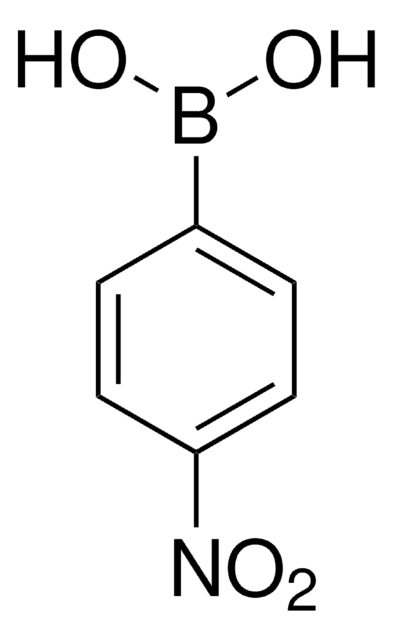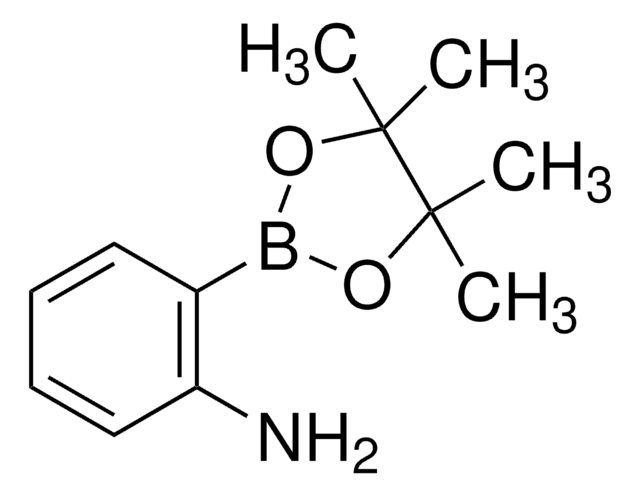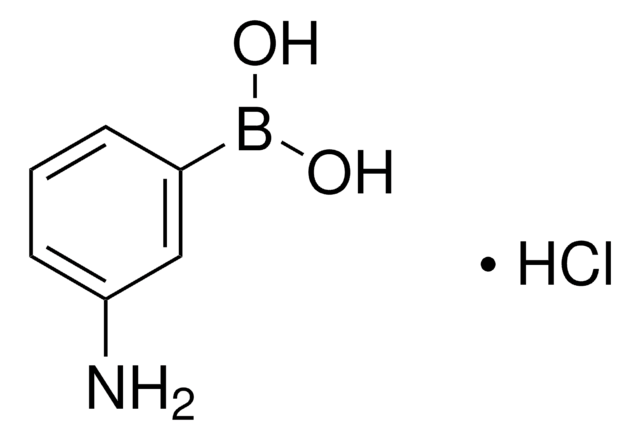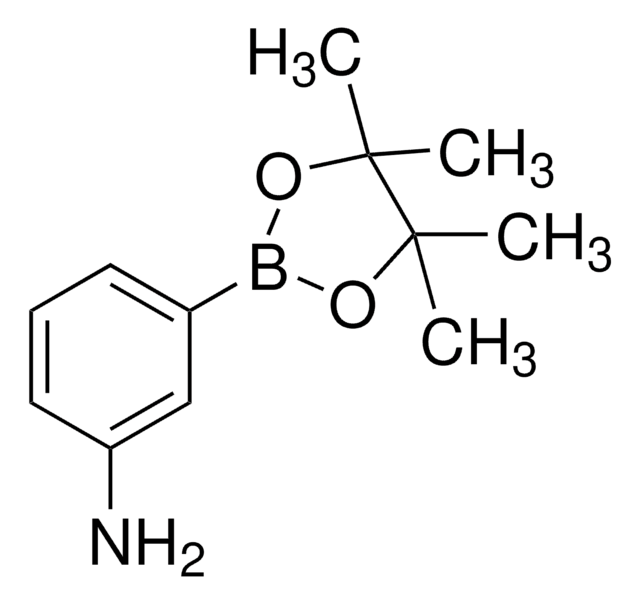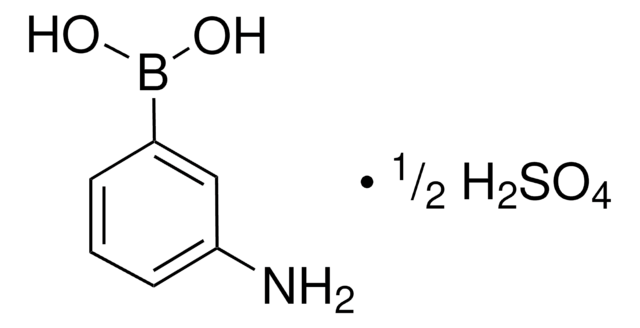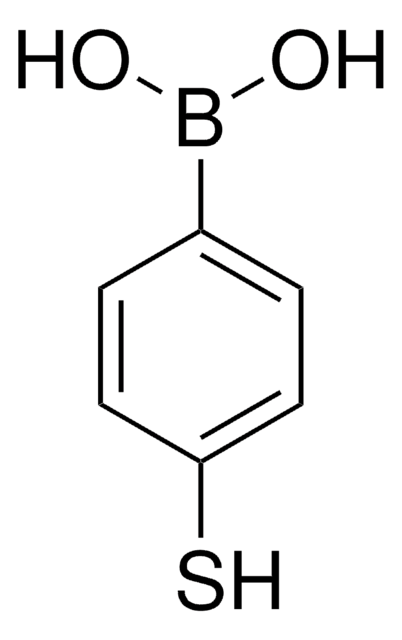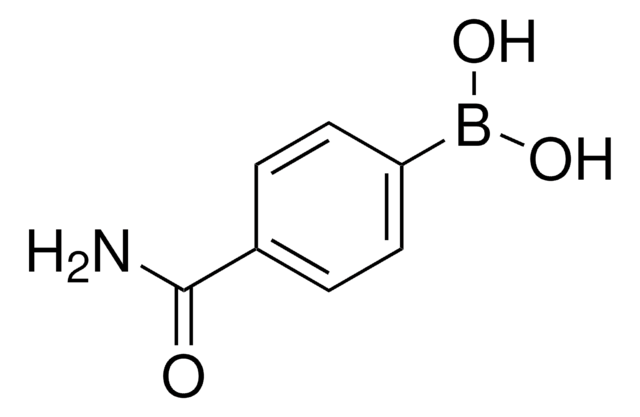Alle Fotos(2)
Wichtige Dokumente
708887
4-Aminophenylboronsäure -hydrochlorid
95%
Synonym(e):
4-Aminobenzeneboronic acid hydrochloride
Anmeldenzur Ansicht organisationsspezifischer und vertraglich vereinbarter Preise
Alle Fotos(2)
About This Item
Lineare Formel:
C6H8BNO2 · HCl
CAS-Nummer:
Molekulargewicht:
173.41
MDL-Nummer:
UNSPSC-Code:
12352103
PubChem Substanz-ID:
NACRES:
NA.22
Empfohlene Produkte
Qualitätsniveau
Assay
95%
Form
powder
mp (Schmelzpunkt)
195-200 °C
SMILES String
Cl.Nc1ccc(cc1)B(O)O
InChI
1S/C6H8BNO2.ClH/c8-6-3-1-5(2-4-6)7(9)10;/h1-4,9-10H,8H2;1H
InChIKey
QBYGJJSFMOVYOA-UHFFFAOYSA-N
Suchen Sie nach ähnlichen Produkten? Aufrufen Leitfaden zum Produktvergleich
Verwandte Kategorien
Allgemeine Beschreibung
May contain varying amounts of anhydride
Anwendung
4-Aminophenylboronic acid hydrochloride can be used to prepare:
- The modified reduced graphene composite material used as a sugar sensor to detect the analyte in fruit juice.
- The modified carbon electrode adsorbed with aminophenol, used for the detection of NADH and H2O2.
- The boron, nitrogen, and sulfur-doped carbon dot sensor, which in turn can be used for the detection of ascorbic acid.
Reactant for:
- Preparation of chromen-4-ones as DNA-dependent protein kinase inhibitors
Hier finden Sie alle aktuellen Versionen:
Besitzen Sie dieses Produkt bereits?
In der Dokumentenbibliothek finden Sie die Dokumentation zu den Produkten, die Sie kürzlich erworben haben.
Kunden haben sich ebenfalls angesehen
Murugan Thiruppathi et al.
Talanta, 200, 450-457 (2019-05-01)
Non enzymatic detection of NADH and H2O2 is of practical significance for both environmental and biological prospective. However, there is no simple, straight forward electrochemical sensor available for sensing of them in real samples. Addressing this challenge, we report a
Qi Wang et al.
Biosensors & bioelectronics, 50, 331-337 (2013-07-25)
A sensitive electrochemical active interface for sugar sensing based on the specific boronic acid-diol binding was established. The sensing matrix was formed by stirring a suspension of graphene oxide (GO) with 4-aminophenylboronic acid (APBA). The resulting composite consists of a
Sabrina Belbekhouche et al.
Colloids and surfaces. B, Biointerfaces, 177, 416-424 (2019-02-25)
Glucose-responsive multilayer capsules have been produced through the layer-by-layer deposition of biodegradable polymers based on hydrogen bonding. The used polymers are alginate derivative and polyvinylpyrolidone (PVPON). Concentration-dependent glucose responsiveness was reached through chemical modification of alginate, selected as polyanion, with
A dual-mode sensor for colorimetric and ?turn-on? fluorescent detection of ascorbic acid
Liu Y, et al.
Dyes and Pigments, 149, 491-497 (2018)
Sun Dal Kim et al.
Science advances, 4(10), eaau1956-eaau1956 (2018-11-07)
The key component currently missing for the next generation of transparent and flexible displays is a high-performance polymer material that is flexible, while showing optical and thermal properties of glass. It must be transparent to visible light and show a
Unser Team von Wissenschaftlern verfügt über Erfahrung in allen Forschungsbereichen einschließlich Life Science, Materialwissenschaften, chemischer Synthese, Chromatographie, Analytik und vielen mehr..
Setzen Sie sich mit dem technischen Dienst in Verbindung.